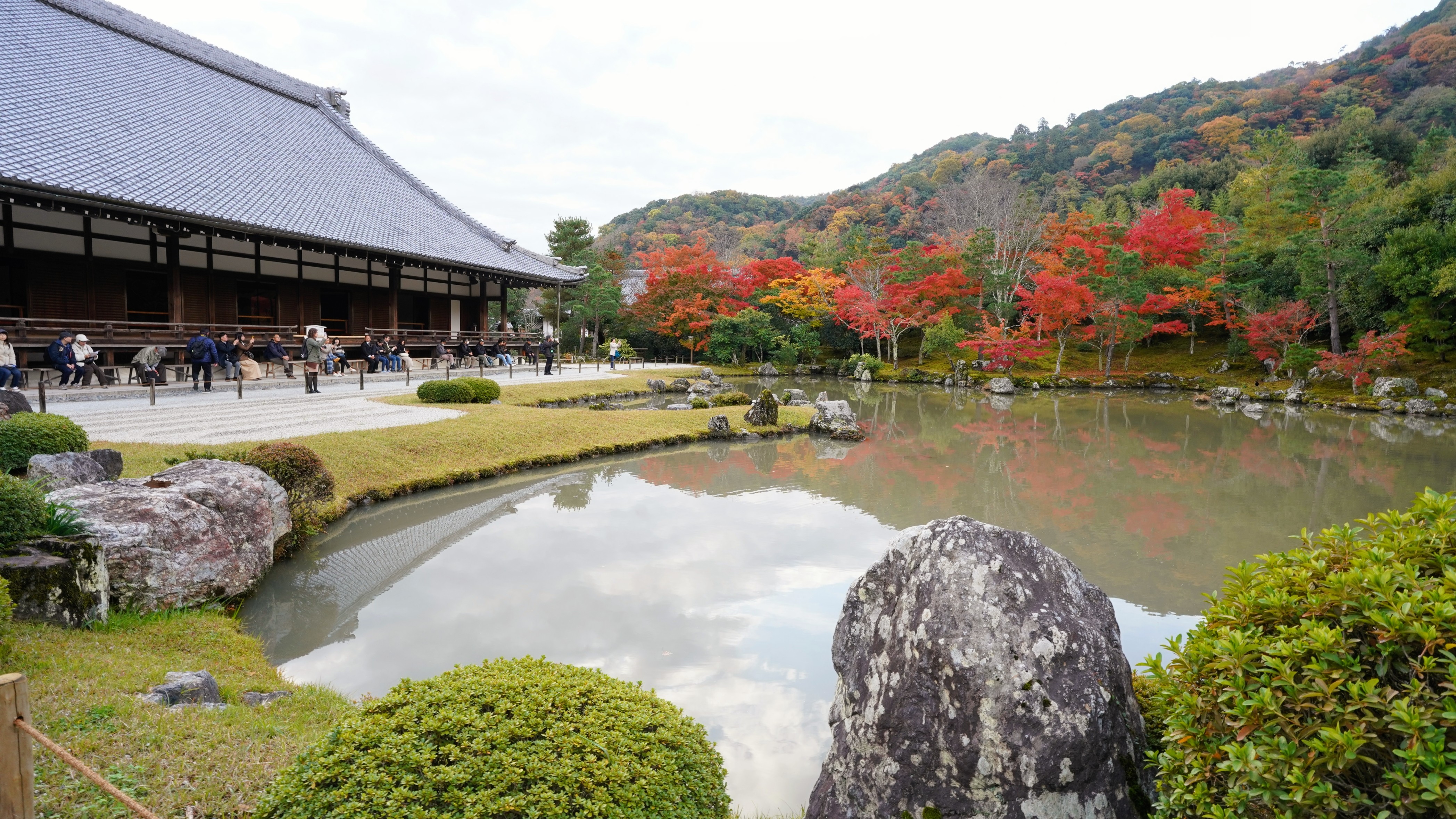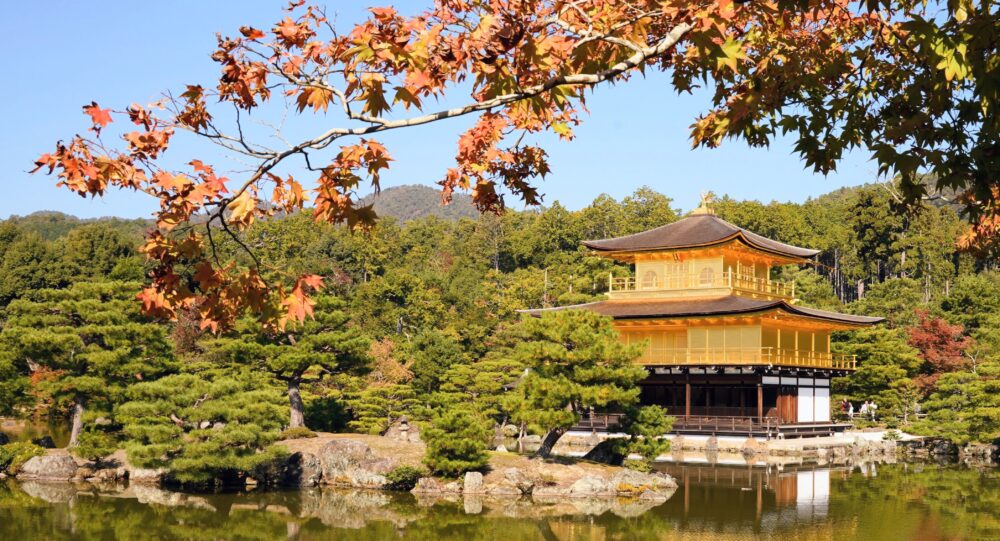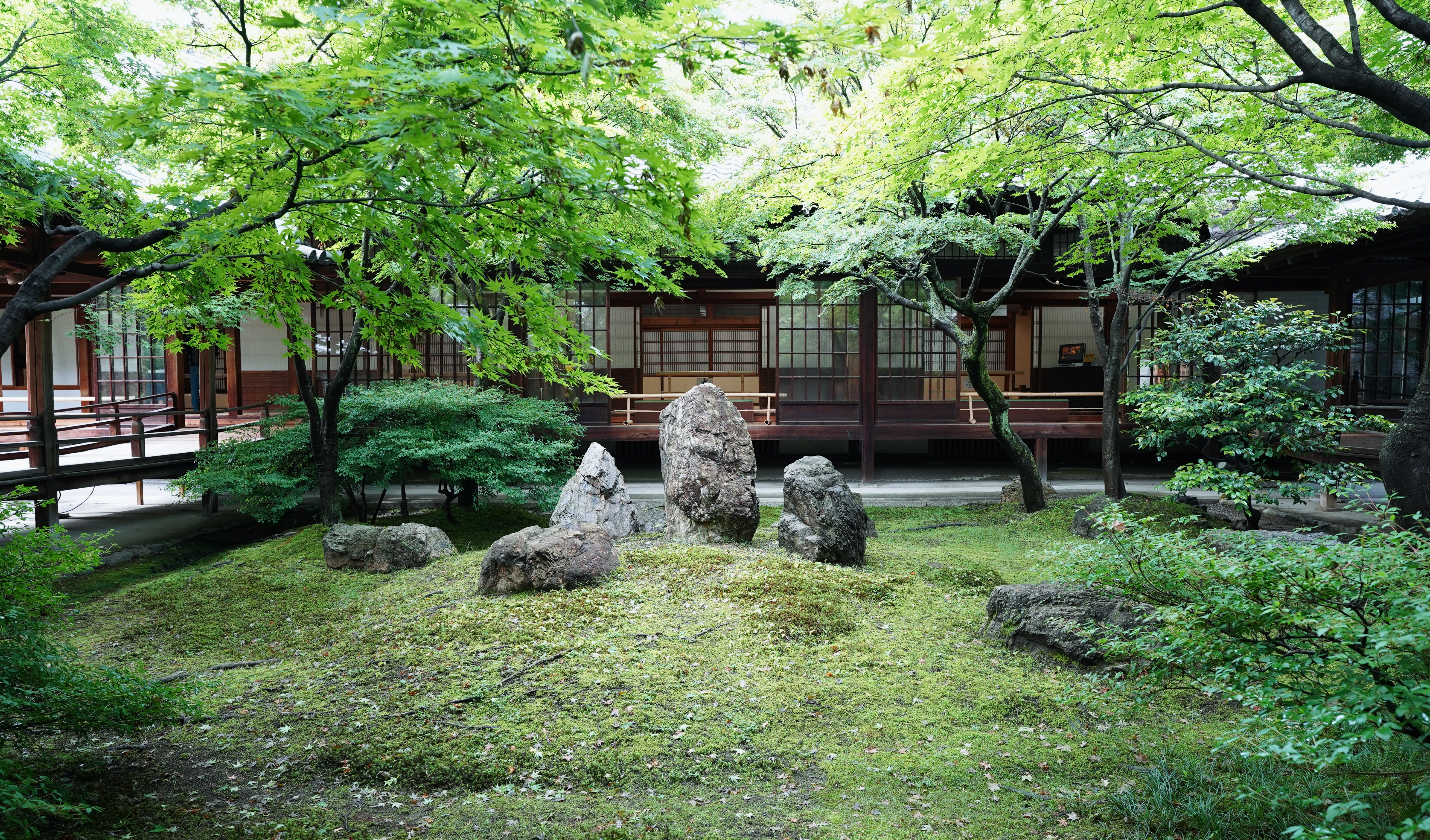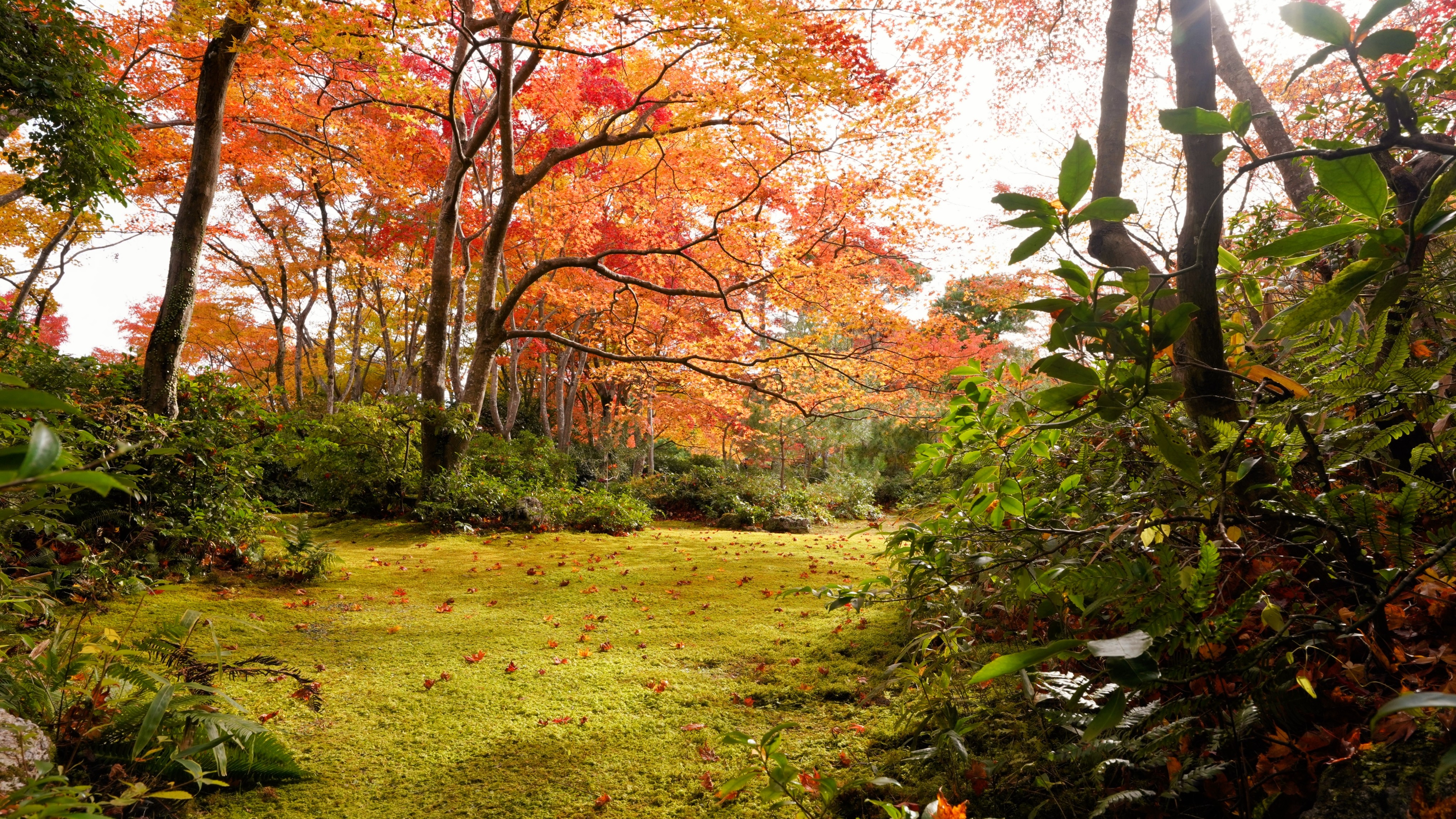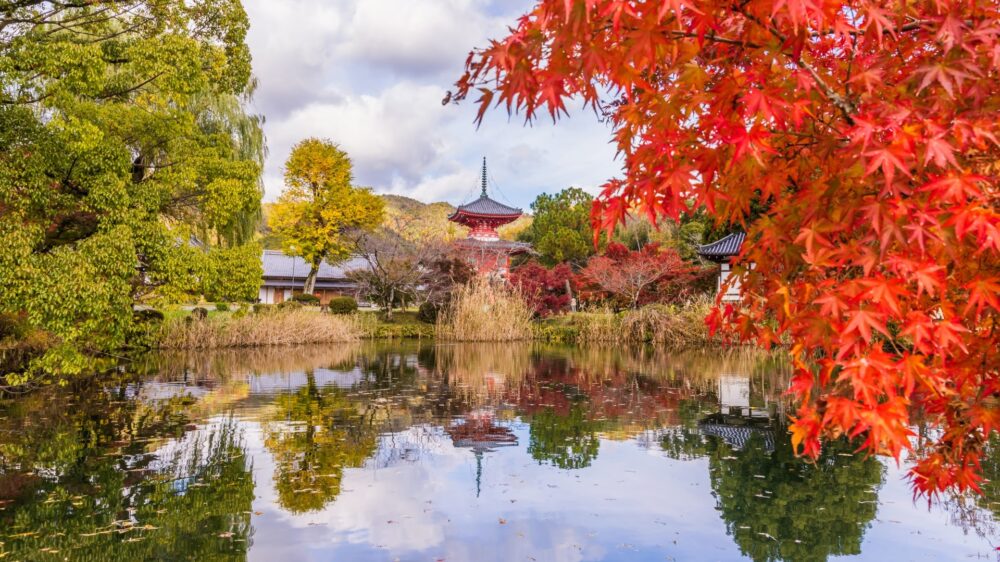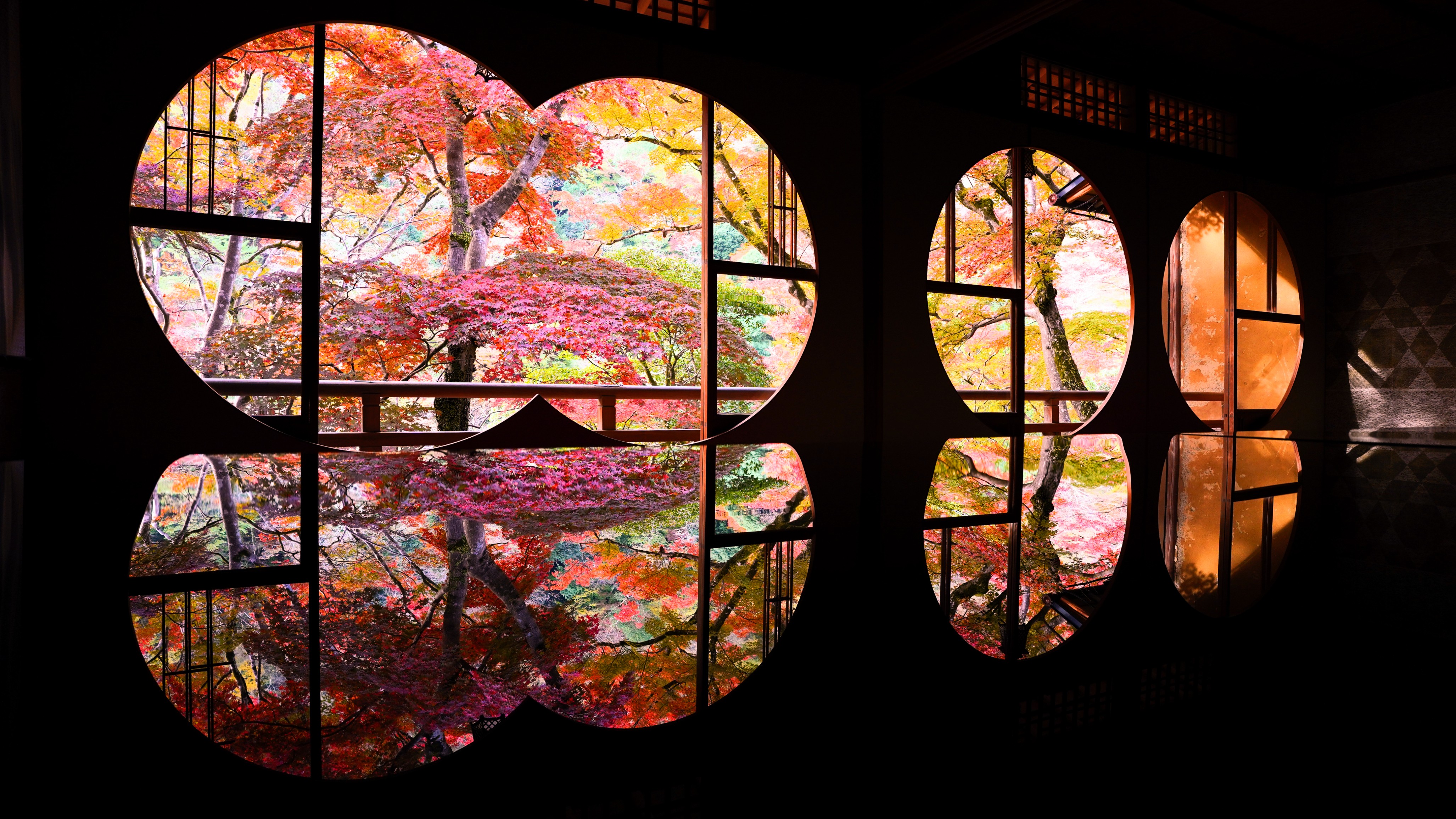Rokuouin Temple in Arashiyama – All You Need to Know
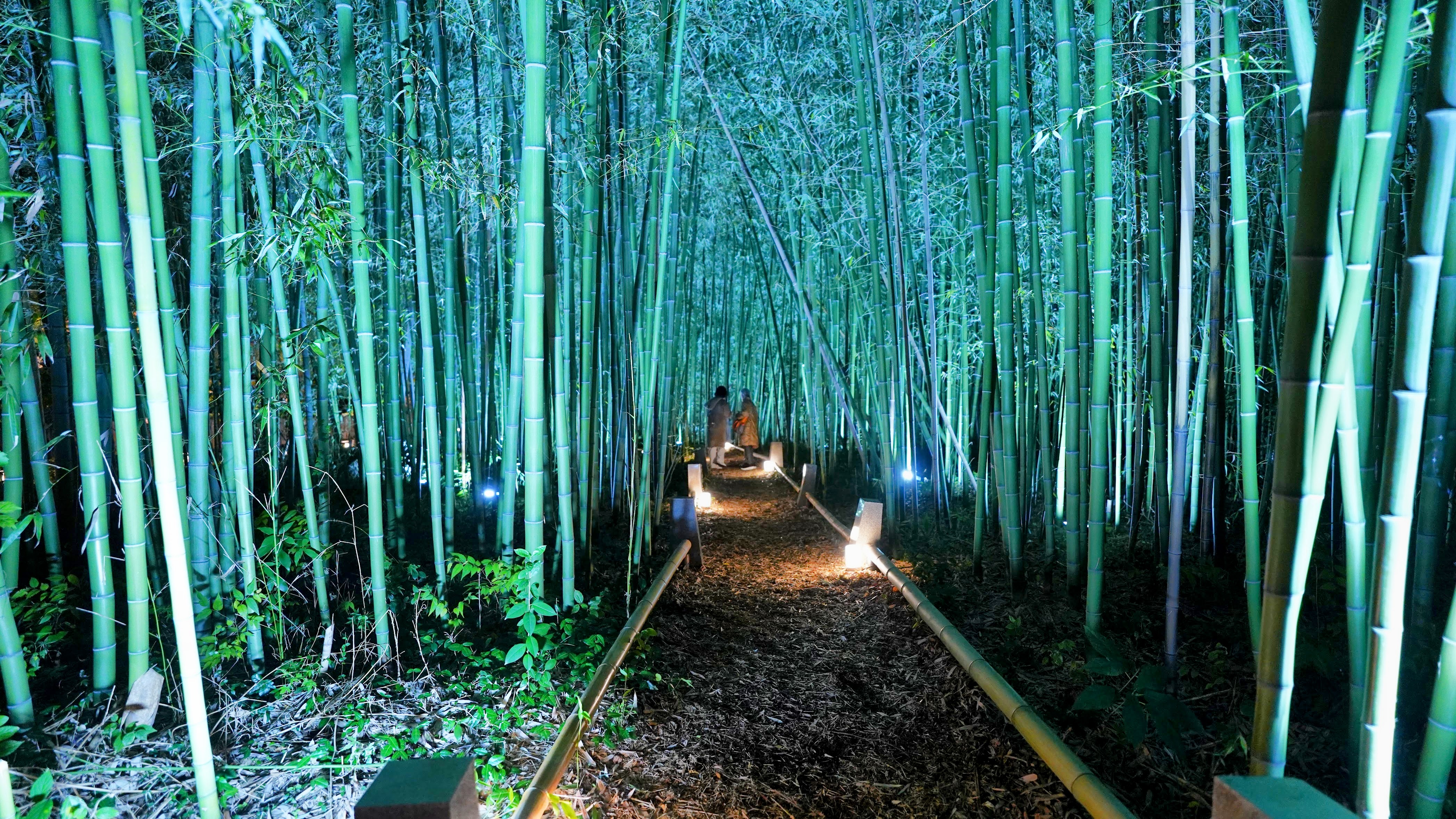
Escape the crowds in Arashiyama and discover the hidden sanctuary of Rokuoin Temple. Marvel at its famed garden, framed by mountains. In autumn, a tunnel of fiery maples leads to an ethereal, illuminated bamboo grove. An exclusive, magical experience awaits you, far from the hustle and bustle.
History
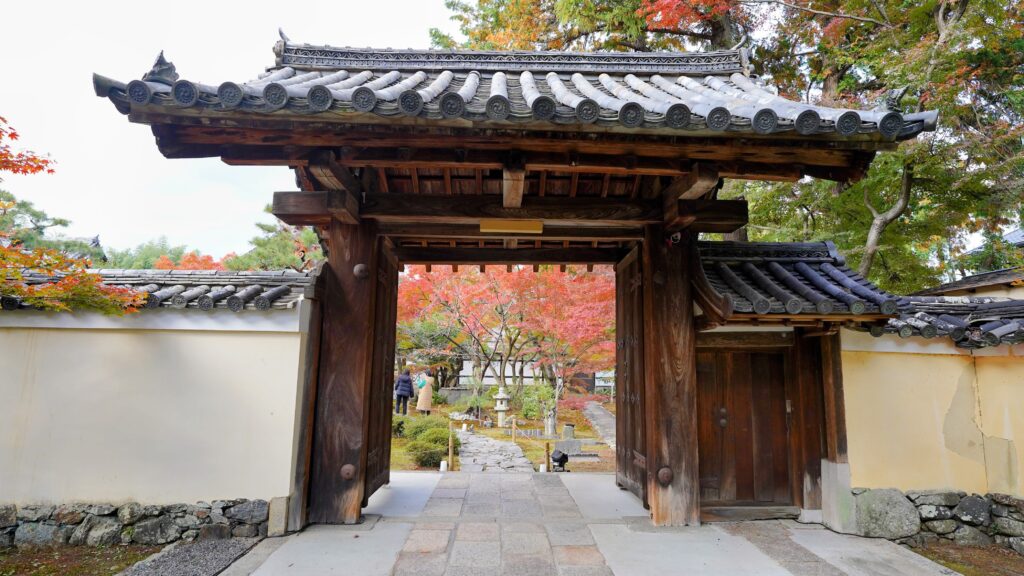
Rokuoin Temple was originally established as a sub-temple of Hōdō-ji Temple in 1379 by Ashikaga Yoshimitsu, the third shogun of the Muromachi shogunate. He wished to pray for longevity. Its founding priest was Shun’oku Myoha, also known as Fumyo Kokushi, a prominent disciple of the renowned Zen master Muso Soseki.
During the Onin War (1467–1477), Hodo-ji Temple burned down and was never rebuilt. Rokuoin was the only structure reconstructed, ensuring its survival. The garden was also restored during this period, and records show that the ninth shogun, Ashikaga Yoshihisa, visited it.
A significant period of restoration occurred during the Edo period, when the temple suffered major damage in the Fushimi earthquake of 1596. The 12th head priest, Koshin Genchiku, led the full-scale reconstruction between 1661 and 1673. Most of the current temple complex (garan) dates from this era. Notably, the Shariden (Relic Hall), also known as the Datsuden, was erected south of the Kyakuden (Guest Hall) in 1763, prompting a major redesign of the adjoining garden.
More recently, the Rokuoin Garden was officially recognized for its cultural value when it was designated a Place of Scenic Beauty by the city of Kyoto in 1987.
Rokuoin Temple’s garden
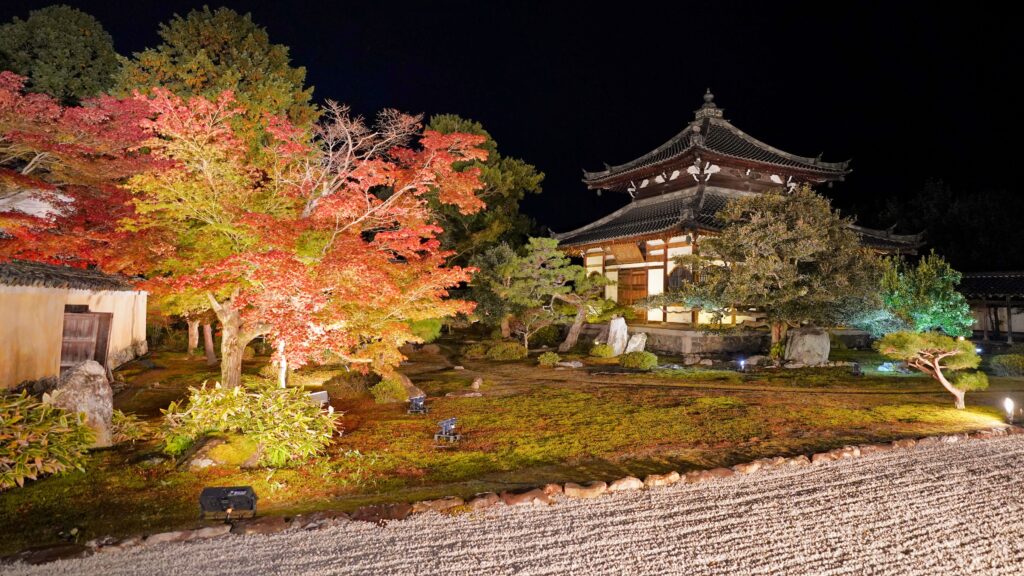
Rokuoin Temple’s garden is a flat-style kare-sansui (Dry Japanese) garden that has been designated a Kyoto City Place of Scenic Beauty.
Its most prominent feature is shakkei, or “borrowed scenery,” which incorporates the majestic Arashiyama Mountains into the background of the garden. From the kyakuden (guest hall), the magnificent Arashiyama mountains blend with the garden’s beauty, creating a sense of profound depth and expanse.
Without the use of water, the garden expresses a landscape of mountains and water through stone, sand, and moss. A beautiful carpet of hair cap moss covers the ground, creating a serene, soul-cleansing space. Stone arrangements, such as the Sanzon-seki (Three-Buddha Stone) and Zazen-seki (Meditation Stone), are skillfully placed within this space, lending a quiet yet powerful impression. Ancient trees, including a 300-year-old mokkoku (Ternstroemia gymnanthera) and a century-old Japanese red pine, add a sense of dignity. In early summer, the Japanese stewartia (sara-sōju or natsu-tsubaki) graces the garden with its white blossoms.
Autumn Foliage
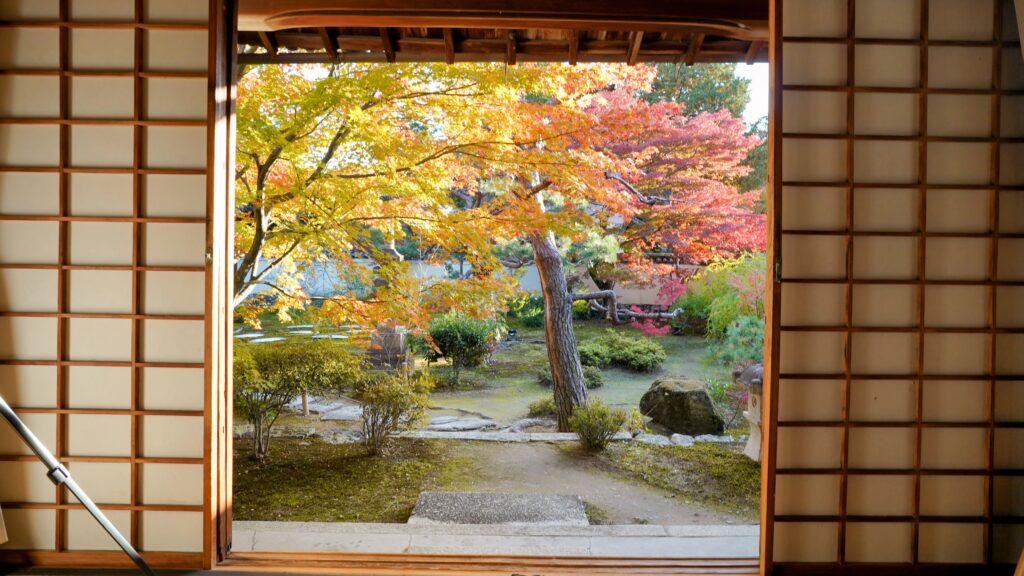
Although Rokuoin Temple is located in the Arashiyama area, it is known as a relatively quiet, hidden gem for enjoying the autumn colors. The peak viewing season is typically from late November to early December.
There are two main highlights. The first is the stone-paved path leading from the main gate to the temple hall. As the Takao-kaede maples on either side of the path change color, they form a tunnel of autumn leaves. This creates a stunning contrast with the green moss on the ground and the bamboo grove in the background.
The second highlight is the view of the dry landscape garden from the guest hall. Here, the green of the meticulously maintained carpet of moss and the red of the fiery maple leaves complement each other, creating a picturesque scene.
The Autumn Light-up Event
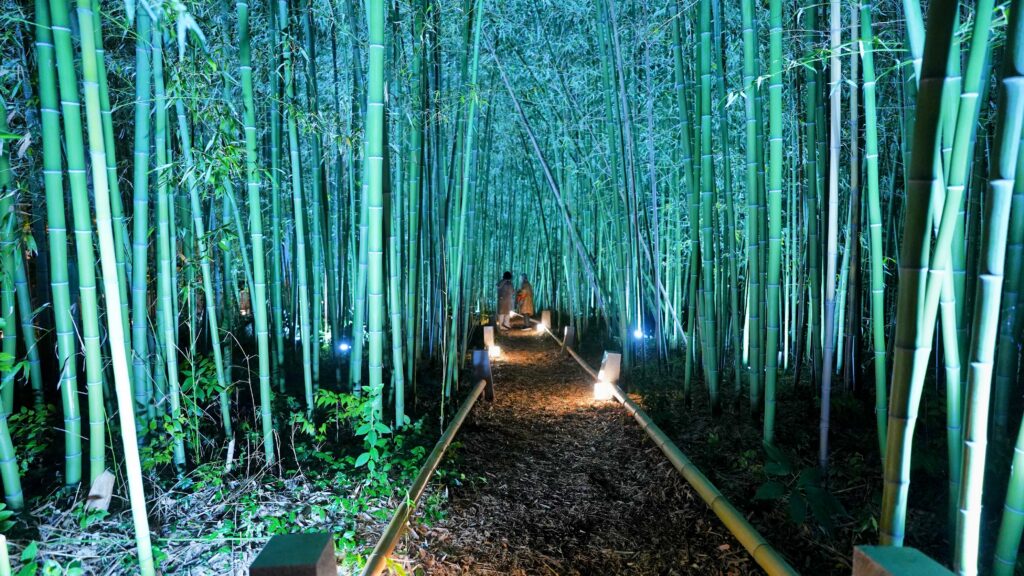
Special openings and evening light-up events are held in autumn, offering a magical atmosphere that is distinct from the daytime. The autumn evening viewing at Rokuoin Temple is a truly artistic light display for adults and an exclusive experience limited to 150 visitors per day.
As you pass through the main gate, a tunnel of fiery maple leaves invites you into an extraordinary world. Just beyond, an ethereal bamboo grove unfolds, illuminated from below and emitting a soft green glow. As you walk along the new path established in 2023, you will be enveloped in profound silence, broken only by the soothing sound of wind rustling through bamboo leaves—a soul-cleansing experience.
Buildings
The brilliant red of the autumn leaves contrasts with the tranquil green of the bamboo grove. This vivid contrast of colors creates a breathtaking spectacle that can only be found here. Leave the hustle and bustle behind and enjoy a deeply moving moment that will be etched in your heart as time slowly passes.
Rokuoin Temple is home to a variety of buildings that tell the story of its long history. The main structures are as follows:
Sanmon (Main Gate)
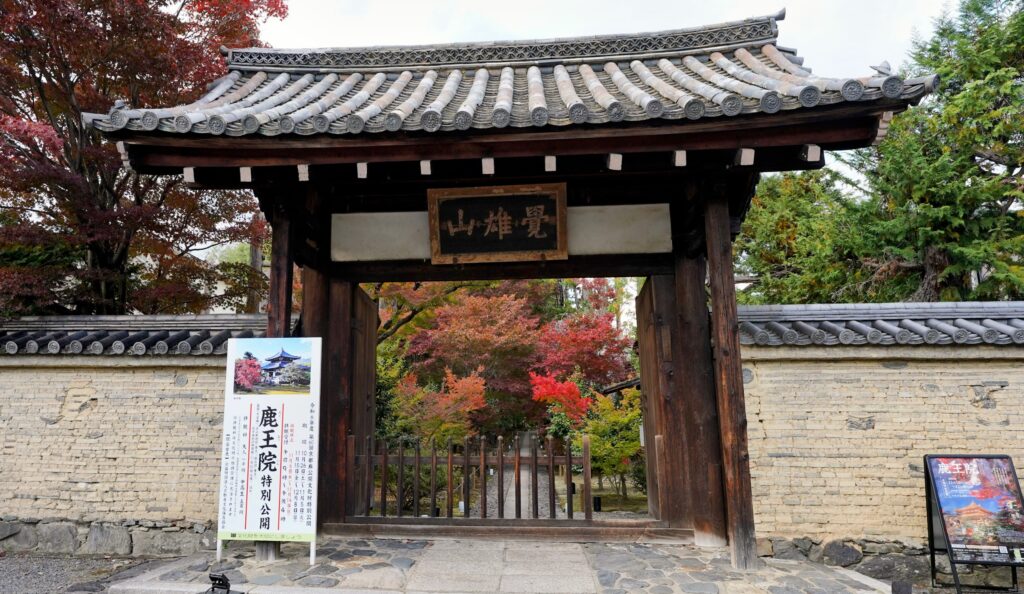
This is the entrance gate to the temple. It features a framed plaque inscribed with “Kakuyuzan,” written by Ashikaga Yoshimitsu, the third shogun of the Muromachi shogunate. This precious structure has survived since the temple’s founding in 1379 and escaped the destruction of the Onin War.
Constructed in the kirizuma-zukuri style with hon-gawara-buki roofing, the gate is believed to date back to the Nanboku-chō period. According to legend, a young Ikkyu, the famous monk and poet, once passed through this gate on his way to study. After passing through the Sanmon gate, a beautiful stone-paved path lined with autumn foliage leads to the middle gate.
Kyakuden (Guest Hall)
This building was reconstructed in 1890, the 23rd year of the Meiji era. From the Kyakuden, visitors can enjoy a panoramic view of the beautiful kare-sansui (dry landscape) garden, which incorporates the gentle slopes of Arashiyama as shakkei, or borrowed scenery. The interior is adorned with fusuma paintings featuring an oak leaf vein theme, completed in April 2020.
During special public openings, the “Shaka Triad and Thirty Patriarchs,” an important cultural property painted by the artist Mincho, is displayed. This offers a rare opportunity to view the artwork without a display case. A plaque bearing the name “Rokuoin,” written by Ashikaga Yoshimitsu, hangs in the guest hall.
Shodo (Main Hall)
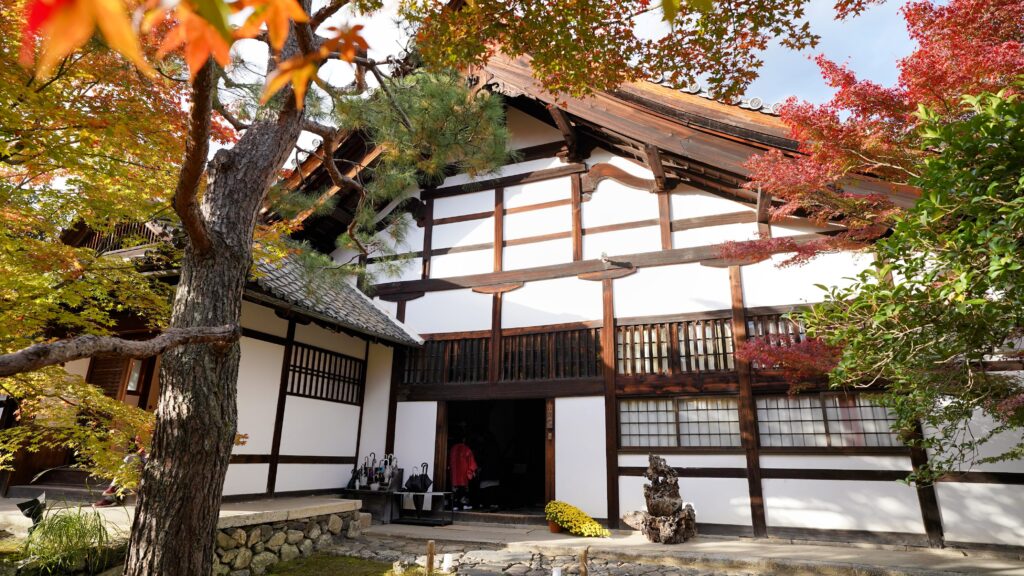
Rebuilt in 1676, the Shodo serves the dual roles of Hondo, the main hall for enshrining the principal image, and Kaisando, the founder’s hall. In the center of the hall is the temple’s principal image, “Shaka Nyorai (Shakyamuni Buddha) and Ten Great Disciples,” which has been carefully preserved since the temple’s founding.
At the rear are enshrined wooden statues of the temple’s founder, Ashikaga Yoshimitsu, and its first head priest, Fumyo Kokushi (Shun’oku Myoha). Fumyo Kokushi’s tomb lies directly beneath his statue. A replica of the “Oei Kinmei Ezu,” an ancient map of the Saga area created during the Muromachi period, is displayed on the right side of the hall.
Shariden (Relic Hall)/Datsuden
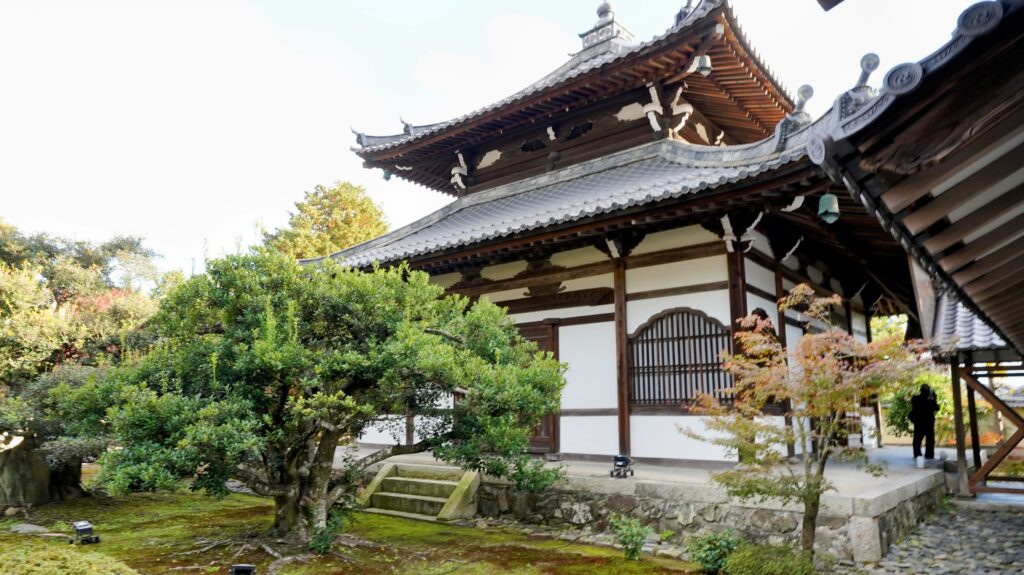
Built in 1763 to the south of the Guest Hall, this building enshrines the “Butsuge-shari,” a relic believed to be a tooth of the historical Buddha. Minamoto no Sanetomo, the third shogun of the Kamakura shogunate, brought the relic from Song-dynasty China. It was later bestowed upon the priest Fumyo Kokushi.
The Shariden underwent major restoration from January 2020 to October 2023, and it was unveiled in its renewed state that month. The doors of the zushi (miniature shrine) containing the relic are typically opened only once a year, on October 15. However, during special openings commemorating the restoration, the doors remain open throughout. Four statues of the Shitenno (Four Heavenly Kings) stand guard around the relic, and a magnificent dragon is painted on the canopy above. Construction of the Shariden finalized the current layout of the garden, designed to be viewed from the Guest Hall’s connecting corridor.
Kaishitsu (Tea House)
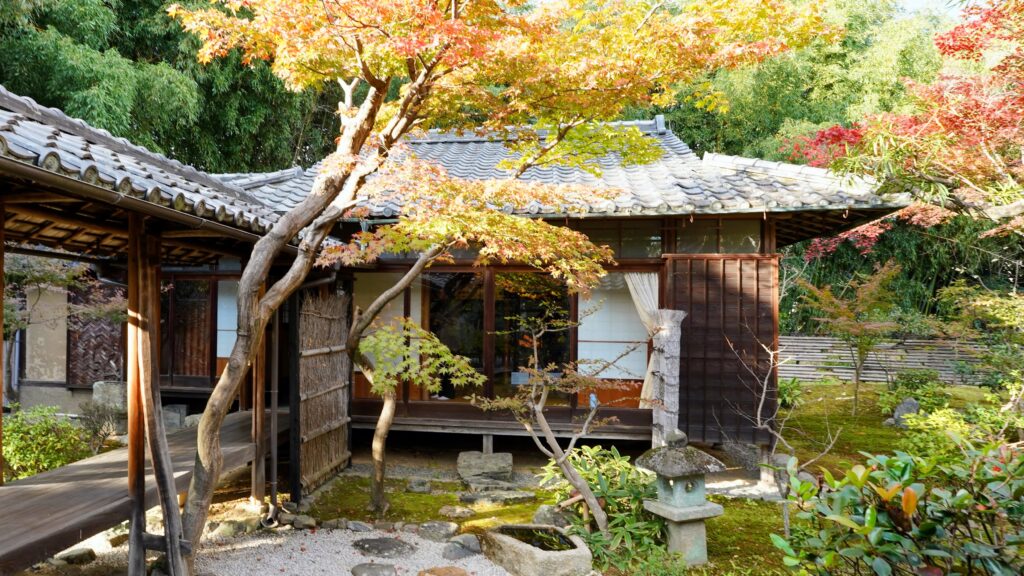
Located north of the Guest Hall, this tea house was donated by Denjiro Okochi, a famous Showa-era actor. It was built by the same Sukiya-style master craftsman who worked on the Okochi Sanso Garden, and its high-quality materials reflect a refined aesthetic. Inside, the “Bun’ami Kadensho,” an essential text on the art of flower arrangement for the tea ceremony, is on display. During special openings, visitors can also view a charming statue of Sho-gun Jizo.
Kuri (Temple Living Quarters)
Visitors first enter here. It serves as an entrance hall where amulets and other items can be purchased. A statue of Idaten (Skanda), a guardian deity, is enshrined here.
The 12th head priest, Koshin Genchiku, extensively rebuilt most of the current Rokuoin temple complex (garan) during the Edo period after the original structures collapsed in the Fushimi earthquake of 1596.
Visiting Information
Regular Hours and Fees
Hours: 9:00 a.m. to 5:00 p.m.
Open all year round (except on holidays).
Admission fee:
Adults: 600 yen
Elementary and junior high school students: 300 yen
Autumn Special Opening Information:
During the autumn foliage season (typically late October to early December), special daytime and evening light-up events are held, which have different hours and admission fees.
Special Autumn Daytime Opening (Part of the Annual Kyoto Special Exhibition of Private Cultural Properties):
Hours: 9:00 a.m. to 4:00 p.m.
Admission fee: Adults: ¥1,000
Junior and senior high school students: ¥500
Note: The original text refers to the “60th” exhibition, which took place in 2024. The autumn 2025 event will be the 61^(st).
Evening Light-up Event:
This event typically runs from mid-November to early December.
Access
Address: 24 Saga Kitahori-cho, Ukyo-ku, Kyoto City, Kyoto Prefecture
By train:
- Keifuku “Randen” Arashiyama Line: A three-minute walk from Rokuoin Station.
- JR San’in “Sagano” Line: a 6- to 10-minute walk from Saga-Arashiyama Station.
By bus:
- Get off at the Shimo-Saga bus stop and walk for seven minutes.
- Kyoto City Bus: Route 11
- Kyoto Bus: Routes 62, 63, 66, 72, 73, 76, and 83.
Other information:
Parking: There is no dedicated parking lot.
